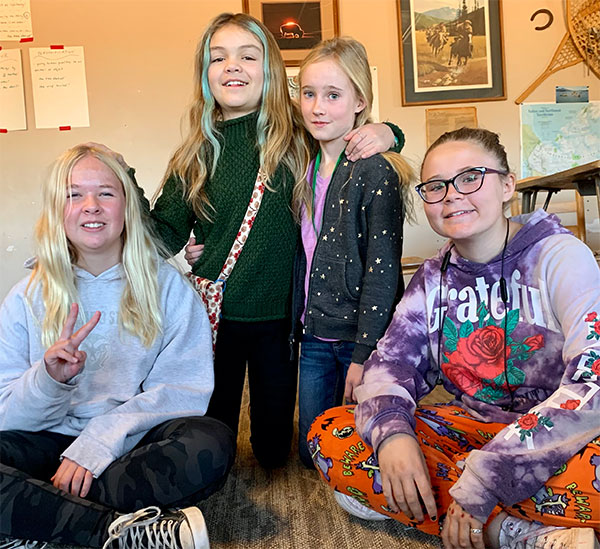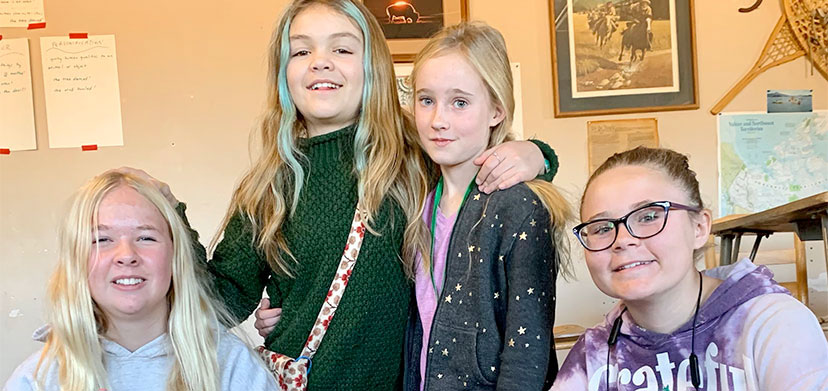Nine Pagosa Peak Open School students grades 6-8 sat on the floor in a circle. They had just spent the past three weeks learning the basics of Restorative Practices (RP): a non-punitive, culture-building approach to handling conflict in schools. This was the first year PPOS would implement a Restorative Practice Student Board, and these nine students would be the RP pioneers.
Their RP introduction included things like restorative language, circles, and mediation. Their next step was to set goals for this student board around building a restorative school. The first item on their agenda? Changing the school’s dress code in order to reflect a restorative mindset.
“The dress code felt targeted and sexist toward feminine people,” eighth-grader Sarah Joy said, “Our school identifies as being progressive and restorative and we wanted the dress code to reflect that.”

Restorative Practices Student Board members Karina, Amelie, Vivi and Sarah Joy (from left) studied multiple dress codes before working with the whole RPSB on PPOS dress code revisions.
The group reflected on not only the PPOS dress code, but also dress codes from around the country. They studied the impact of dress codes and formed their own opinions based on this new learning. Students then created a presentation for the PPOS school board, and a revised PPOS dress code.
“Our founding vision was for the students to get involved in the governance and operations of the school to directly immerse them into a democratic community,” PPOS School Board President Ursala Hudson said. “When students are consulted about policies, and are able to influence decisions that directly affect them, they become more invested in the organization because they are heard. This fosters a strong sense of place and belonging.”
The PPOS School Board voted to adopt the students’ revised dress code on November 17 and the new dress code went into effect December 1. Student responses so far have been positive.
“It makes me feel more comfortable with my body,” PPOS seventh-grader Annie said.
Revisions to the dress code included: violations going to the RP Student Board instead of the school director; the prohibition of hatred and bigotry; the addition of expectations for clothing during special events like ‘Presentations of Learning’ and field work days; and the removal of banning specifically identified styles of clothing (such as sweatpants, sheer clothing and skirts that go above fingertips).
“The contemplation and work that the students’ put into reforming the dress code will affect future students, and that’s the outcome of real, meaningful work,” Hudson said.

